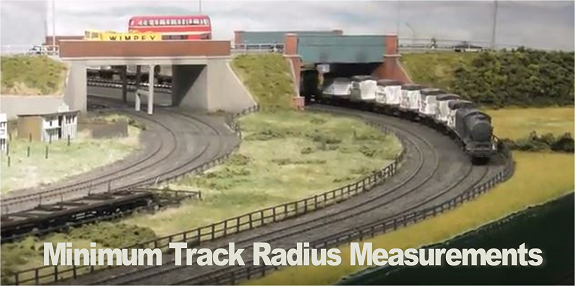Everything on model trains, model railroads, model railways, locomotives, model train layouts, scenery, wiring, DCC and more. Enjoy the world's best hobby... model railroading!
Careful Track Planning From The Beginning To Avoid Potential Problems Further Down The Track
There’s no point in spending time, effort, and money building what you thought was the perfect layout, only to modify it or start all over again. That is very different from improving it because there’s nothing wrong with making positive changes and expanding your railroad as and when your skills develop. Most model railroaders do that – their railroad progresses as they progress.

Making the track curves too tight
With the pressures of fitting everything into a layout, there will always be the temptation to make the curves tighter than they should be. This is typically fraught with problems, even if you have done some test runs with locomotives and cars around the curve.
Even if the trains run okay –
Does the tight track curve look natural? If you are modeling a modern-era railroad, rolling stock lengths are much longer these days than they were in the past. Long cars make the curves look even sharper than they are.
Would a real railroad have curves that tight? The answer to this is always a resounding “no.” Real railroad curve radii are much larger than can be accurately modeled in a reasonable space. The best that can be done is to make the curves as large as your space will permit, then use some scenic tricks to distract the viewers from the appearance.
What happens when you buy a new loco or longer car that won’t make it safely around the curve? This goes back to the era in which you choose to model. A setting with large late Steam-era articulated locos is not a good decision for a minimal space. Logging and mining or switching puzzle layouts with shorter rolling stock are better choices if your situation requires sharp curves.
The golden rule is this; make the minimum radius AT LEAST as large as recommended for the longest car you plan to run on your layout. That way you won’t have any regrets later.
One Response to Careful Track Planning From The Beginning To Avoid Potential Problems Further Down The Track
Leave a Reply
















I built the main stations on the line from Adelaide to Morgan in South Australia using 1913 track plans, although selectively compressed, they are recognisable to the cognise.
If the plans are correct, I have built the most confusing, unusable station layouts in the world, they were pit down by English and Irish engineers. If I had used the 1926 plans, reorganised by the American engineer working the railway (model) would have been much easier.